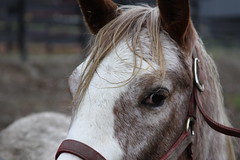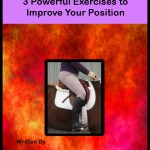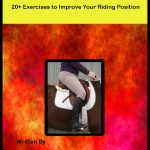Teach the Basics…. “Heels Down!”

![]() photo credit: Svadilfari
photo credit: Svadilfari
We’ve all seen those riders who magically get their horses to seamlessly perform without any effort. It may be a beautiful hunter round, jumper course, dressage or western reining or pleasure. How do they do it.
With this simple outline I hope to offer you some important strategies to improve your overall riding ability and get noticed for your riding style.
Develop a good base
A rider’s base of support is the first and fundamental aspect of the riders tool box. It is essential that all riders have a good foundation. Just like a building structure needs a foundation to build on, a rider needs a foundation for their basic riding position. 
![]() photo credit: Panther1619
photo credit: Panther1619
The foundation of a rider’s position is their leg and seat. Without a strong leg and seat your position will be weak. From heel to pelvis the rider has to be balanced and secure. A rider that stays in balance and has a good base of support or leg will rarely become unseated.
It is not just “put your heels down” that makes for a strong leg, it is the balance and form of the leg that determines the strength. You can have your heels down and not be effective or secure. Lowering your heels is important as this allows the weight to be distributed throughout and lowers the weight to its deepest part.
A good Leg Position
A good leg position is characterized by a deep and secure heel with the toes pulled up. The leg has to envelop the horse in a secure but relaxed fashion with equal tension resting throughout the leg in contact with the saddle.
The leg should hang naturally from the hip with the toe pulled up and the heel comfortably under the riders seat. Some common problems are:
- the heel shooting out in front of the rider, a chair seat
- the leg slipping back
- loose leg
- gripping leg
Exercises to Help
After you have checked to ensure that:
- the saddle fits the horse correctly
- the saddle fits you correctly
consider the following exercises.
Exercises at the halt – Remember when performing these exercises have someone with you at all times and if you are concerned that your horse may not accept you performing these exercises please be sensible and perform them on a suitable horse.
- Toe touches– While halted remove your feet from the stirrups and touch your right hand to your right toe. Stretch your right hand above your head with your fingers pointed upward and then bending from your waist, reach down and touch your toe. It is imperative that your left leg remain completely still. When bending down to touch your toe, keep both legs still by stretching your heels down and forward. Do not allow your leg to swing back but control the position of both legs. Repeat 10 times on each side.
- Lean back on the horse – Once again remove your feet from the stirrups and lean back on the horses back. Touch your helmet to the croup of the horse. This is important, keep your legs still. When leaning back keep your legs under your seat. Control your legs by stretching your legs down and back underneath your seat. These exercises will help develop an independent seat necessary for riding.
Including these simple exercises will help you improve your riding position. Incorporate work without stirrups and exercises at the beginning of your training session to warm up yourself before your ride. If you find that your horse will not stand, then try doing these stretches during the cool down of your program.
Above all, have fun.
 Try these three powerful exercises to get strengthen your position.
Try these three powerful exercises to get strengthen your position.

Thank you for your great comment on my blog about “Teach the basics – Heels Down” I hope you got some good tips.
Do you have any good excercises for riders with stiff, straight arms?
Thanks for the great Idea. I will address this in an upcoming posts. In the meantime develop an independant seat through riding and working without stirrups.
Keep watching!
Thanks again
thanks Anna… yes this is a great topic for my next post… I will keep you informed. Until then … try riding with a crop under your thumbs so the riding crop is horizontal to the ground. This helps focus on the riders hand position so that riders hold their arms correctly. Also lunging a rider with stiff arms and get them to carry a salt lick or brick in front of them while they are riding. this way they will have to use their ‘core’ muscles rather than their arms to ride.
I am adding your name to my newsletter so that you may enjoy some other tips!
Thanks
Laura